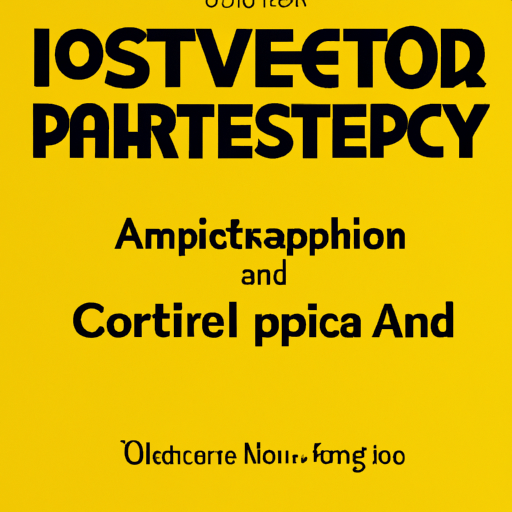
-
Table of Contents
Typography in Logo Design: Tips and Best Practices

When it comes to logo design, typography plays a crucial role in conveying the brand’s message and identity. The right choice of fonts can make a logo memorable, impactful, and instantly recognizable. In this article, we will explore some tips and best practices for using typography effectively in logo design.
The Importance of Typography in Logo Design
Typography is the art and technique of arranging type to make written language legible, readable, and visually appealing. In logo design, typography serves as a powerful tool to communicate the brand’s personality, values, and positioning. Here are a few reasons why typography is important in logo design:
- Brand Identity: Typography helps create a visual identity for the brand. The right choice of fonts can evoke emotions, convey professionalism, or reflect the brand’s unique style.
- Memorability: A well-designed logo with distinctive typography is more likely to be remembered by customers. It helps the brand stand out in a crowded marketplace.
- Recognition: Typography can contribute to the recognition of a brand. Consistent use of fonts across various touchpoints helps customers associate the typography with the brand.
- Communication: Typography can convey the brand’s message and values. Different fonts have different connotations, and the right choice can help communicate the desired message effectively.
Choosing the Right Fonts
Choosing the right fonts for a logo is a critical step in the design process. The fonts should align with the brand’s personality, target audience, and industry. Here are some tips to consider when selecting fonts for a logo:
- Research the Brand: Understand the brand’s values, target audience, and industry. This will help determine the appropriate style of fonts.
- Consider Legibility: The fonts should be easily readable, even at small sizes. Avoid overly decorative or complex fonts that may hinder legibility.
- Avoid Trendy Fonts: While trendy fonts may seem appealing at first, they can quickly become outdated. Opt for timeless fonts that will stand the test of time.
- Balance: Choose fonts that complement each other and create a harmonious balance. Pair a bold font with a more subtle one to create contrast and visual interest.
- Customize if Necessary: If the available fonts don’t fully align with the brand’s identity, consider customizing or creating a unique font. This can help create a truly distinctive logo.
Typography Hierarchy
In logo design, typography hierarchy refers to the arrangement and emphasis given to different elements of the text. It helps guide the viewer’s attention and communicate the most important information effectively. Here are some tips for establishing a clear typography hierarchy in a logo:
- Primary Element: Determine the most important element of the text, such as the brand name or tagline. This element should be given the highest visual weight and prominence.
- Secondary Elements: Identify secondary elements that support the primary element, such as a slogan or additional information. These elements should have a slightly lower visual weight but still be easily readable.
- Contrast: Use contrast in font size, weight, or style to create visual hierarchy. The primary element should stand out and be more prominent than the secondary elements.
- Whitespace: Utilize whitespace effectively to separate different elements and improve readability. Give each element enough breathing space to avoid clutter.
Typography and Brand Personality
Typography can play a significant role in conveying the brand’s personality and values. Different fonts have distinct characteristics that evoke specific emotions and perceptions. Here are a few examples:
- Serif Fonts: Serif fonts, with their small decorative lines at the ends of characters, are often associated with tradition, elegance, and reliability. They can be a good choice for brands in industries such as finance, law, or luxury.
- Sans-serif Fonts: Sans-serif fonts, without the decorative lines, are perceived as modern, clean, and straightforward. They are commonly used by technology companies or brands aiming for a contemporary image.
- Script Fonts: Script fonts mimic handwriting and can convey a sense of creativity, elegance, or femininity. They are often used by beauty or fashion brands.
- Display Fonts: Display fonts are highly decorative and attention-grabbing. They can be used to create a bold and unique logo for brands that want to stand out.
Case Studies: Successful Typography in Logo Design
Let’s take a look at some real-world examples of successful typography in logo design:
1. Coca-Cola
The Coca-Cola logo is a classic example of effective typography. The flowing script font used for the brand name evokes a sense of tradition, warmth, and friendliness. The unique shape of the letters, especially the “C,” makes the logo instantly recognizable.
2. Google
Google’s logo is a great example of using a simple and clean sans-serif font. The playful use of colors in the letters reflects the brand’s fun and innovative personality. The logo is easily readable and memorable, even at small sizes.
3. FedEx
The FedEx logo cleverly incorporates negative space to create an arrow between the “E” and “x.” The bold and strong sans-serif font communicates reliability and professionalism, aligning with the brand’s positioning as a global shipping company.
Typography Best Practices
Here are some additional best practices to keep in mind when using typography in logo design:
- Keep it Simple: Avoid using too many fonts in a single logo. Stick to one or two fonts to maintain visual consistency and clarity.
- Test Legibility: Ensure that the logo is easily readable across different sizes and mediums. Test it in both digital and print formats to ensure legibility in various contexts.
- Consider Scalability: Design the logo in a vector format to ensure scalability without loss of quality. This allows the logo to be used across different platforms and sizes.
- Be Consistent: Use the same typography across all brand touchpoints to create a cohesive and recognizable identity.
- Stay Timeless: Avoid using trendy fonts that may quickly become outdated. Opt for fonts that
